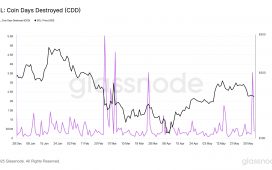“According to the federal Bureau of Labor Statistics, nearly 73% of businesses reported that their workers rarely or never engaged in remote work in 2022 — closing in on pre-pandemic levels,” writes a Seattle Times business columnist. “But this minority of the civilian workforce working remotely casts a large shadow over our economy, especially central business districts.”
The column’s headline argues that Seattle “is still facing the reckoning from remote work” — which may also be true in other big tech cities.
Kastle Systems, which tracks back-to-the-office moves, estimated 49.8% occupancy as of late June. Kastle uses a 10-city average ranging from New York to Los Angeles but doesn’t include Seattle. In the latest report, Houston led at nearly 61% occupancy. San Jose, Calif., in the heart of Silicon Valley, where remote work flourishes, was the lowest at 38%. As of May, 48% of workers in Seattle’s central core have returned to the office compared with 2019, according to the Downtown Seattle Association. The most significant boost has come from Amazon, which mandated employees must work in the office at least three days a week.
So, you can be an offices-half-full or an offices-half-empty kind of person.
Still, Capital Economics, an independent research firm, estimated this past month that remote work will shave 35% from the value of the U.S. office sector. In addition, it predicted many office buildings won’t return to their previous peak values until 2040 or later… As loans come due for commercial real estate properties, many cities face a reckoning. Refinancing is difficult with high interest rates. In some cases, buildings are worth less than the land they occupy. Foreclosures and defaults are rising. This is already spilling over to hurt sectors that are dependent on offices, such as architects, cleaning services, construction and others. The Wall Street Journal estimates this accounts for a “multibillion-dollar ecosystem.”
As a result, many American cities are struggling to convert office buildings unlikely to see workers again into other uses, especially apartments. Rigid zoning and building codes, the footprint of the structures, and resistance from nearby homeowners to increased density all make this difficult. Seattle is facing some of the same challenges. Mayor Bruce Harrell announced a “call for ideas” to alter some of the city’s office space to residential or other uses…
Several trend lines are moving in the right direction — return of workers, number of residents, visitors and hotel occupancy are all going up, and crime is going down, with violent crime and property crime down the first five months of the year compared with 2022. Downtown has seen a 13.8% decrease in violent crime and a 35.1% drop in property crime over the same period… To be sure, we’re in undiscovered territory. But giving up on downtown Seattle is not an option. It accounts for the majority of the city’s business taxes and majority of its workers…
Whether remote or hybrid work remains for much of the local workforce or a gradual return to the office continues, the heart of the city must be healthy.










